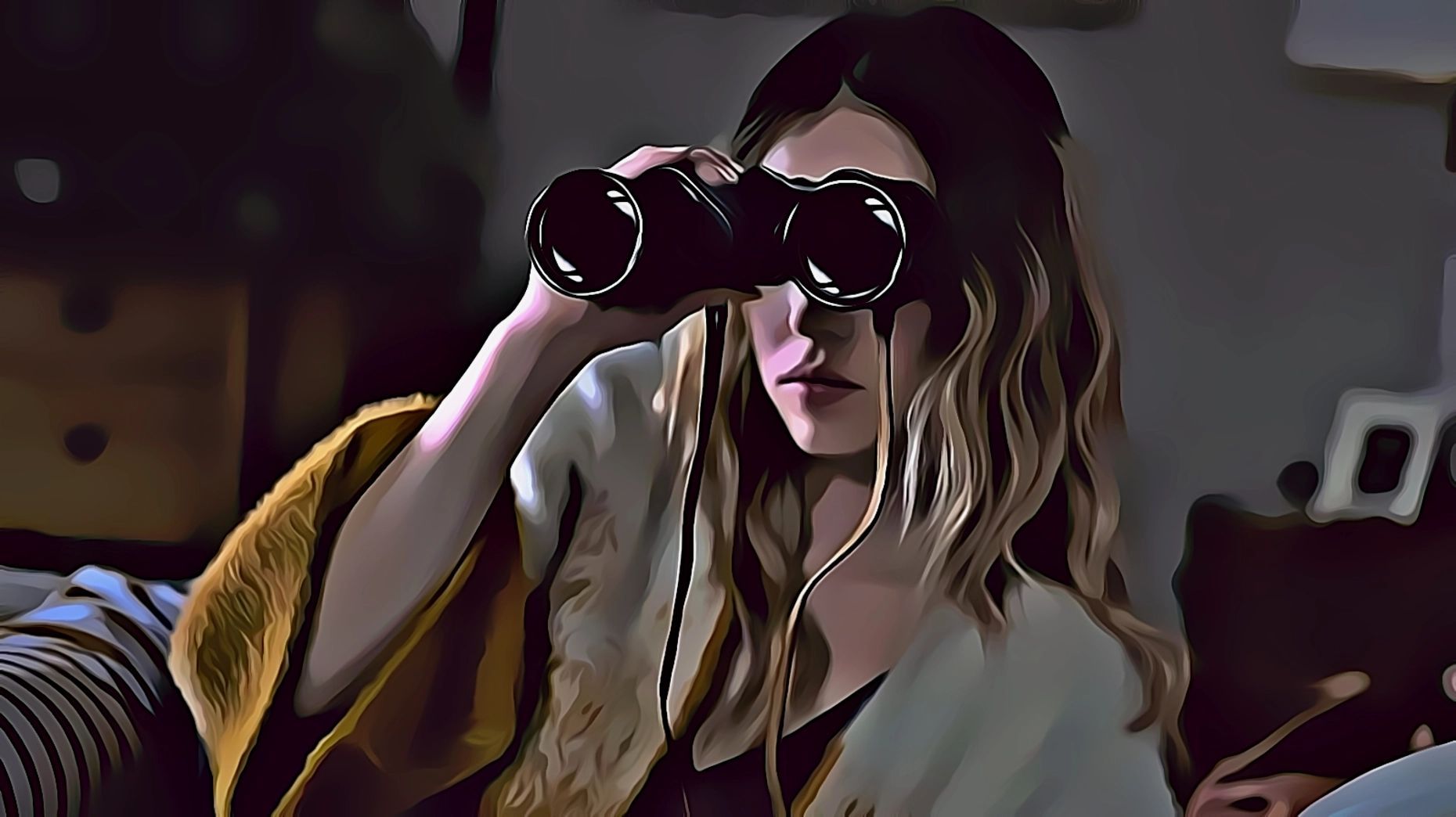1. Introduction to Voyeurism
1.1. Definition and Overview
Voyeurism, at its core, refers to the act of secretly observing someone without their knowledge or consent, typically for personal sexual pleasure. Deriving from the French word “voir,” meaning “to see,” voyeurism taps into the allure of watching others while remaining unseen oneself.
Historically, the term was predominantly associated with “Peeping Toms,” individuals who would stealthily watch others in private, intimate scenarios. However, in the digital age, the concept has expanded. Today, voyeurism is not just confined to peering through a neighbor’s window but extends to watching people through various mediums, including online platforms and hidden cameras.
This act poses ethical and legal concerns, especially when intrusive and without consent. It’s important to note that while natural curiosity can lead to occasional people-watching, voyeurism, as traditionally understood, crosses boundaries, turning observing into a fetish or a violation of privacy.

1.2. Historical Context of Voyeurism
Voyeurism’s origins can be traced back to ancient times. With their public baths, the ancient Romans showcased a nuanced acceptance of public nudity. Fast-forward to the Middle Ages, the legend of “Peeping Tom” emerged in England, symbolizing the act of illicitly watching Lady Godiva as she rode naked through Coventry.
Renaissance art, filled with scenes of private moments, suggests voyeuristic undertones. By the Victorian era, a mix of strict public morality and private curiosity flourished. Today’s digital age has only amplified voyeuristic tendencies, turning them into a global phenomenon with roots in our distant past.
2. Psychological Perspectives on Voyeurism
2.1. The Drive Behind Watching Without Being Seen
Voyeurism taps into a deep-seated human desire for intimacy and knowledge without vulnerability. By watching unseen, individuals can satiate their curiosities, exert a sense of control, and experience a thrill, all while remaining detached and safe.
This act becomes a power play, where the observer holds authority over the observed, knowing their secrets without reciprocation. The allure is multifaceted, blending the pleasure of forbidden observation with the human instinct to understand others from a protected vantage point.
2.2. Voyeurism and Sexual Fantasy: A Natural Human Behavior?
Voyeurism, when linked to sexual fantasy, navigates the fine line between innate curiosity and fetish. While human beings naturally seek to understand and explore sexuality, turning the act of watching into a secretive pleasure can be seen as an extension of this curiosity.
Yet, when it infringes on others’ privacy, it becomes ethically problematic. While some argue that voyeuristic tendencies are hardwired, driven by evolution and the desire for knowledge, others emphasize the importance of consent, boundaries, and societal norms in differentiating between natural behavior and potential violation.
For most people, they just love the idea of seeking a woman’s breasts in public. There are plenty of opportunities for this as you can see in this braless post.
2.3. Distinction between Casual Observation and Clinical Voyeurism
Casual observation is a natural human behavior, where one might people-watch at a park or notice a neighbor. It’s rooted in curiosity and often lacks sexual motivation.
Clinical voyeurism, on the other hand, is a paraphilic disorder where an individual derives sexual pleasure from watching others undress or engage in intimate activities, typically without their consent.
This act goes beyond mere curiosity, driven by deeper, often compulsive urges, and can lead to significant distress or even legal repercussions for the voyeur, as well as harm or violation for the observed.
3. Types and Forms of Voyeurism
3.1. Accidental vs. Intentional Voyeurism


Accidental voyeurism occurs when someone unwittingly witnesses a private or intimate moment, like accidentally walking in on someone changing. There’s no premeditated intent to observe without consent.


Intentional voyeurism, conversely, involves a deliberate act of watching someone without their knowledge or permission, often for personal gratification.
This act is pre-planned and purposeful, with the voyeur seeking out opportunities to observe, often with a sexual motive. While accidental voyeurism might lead to momentary embarrassment, intentional voyeurism raises significant ethical and legal concerns, as it breaches privacy boundaries.
3.2. Technological Voyeurism: Cameras, Drones, and the Internet
Technological voyeurism refers to the use of modern devices to secretly observe others. Cameras, often hidden, capture private moments without consent. Drones, with their aerial reach, can invade previously inaccessible spaces.
The Internet, particularly social media and streaming platforms, allows for broader dissemination of voyeuristic content and even facilitates real-time spying. This tech-driven voyeurism amplifies traditional peeping tendencies, creating new ethical dilemmas and privacy concerns in an interconnected digital age.
3.3. Artistic Voyeurism: Cinema, Photography, and Literature


Artistic voyeurism is the exploration of voyeuristic themes through art forms like cinema, photography, and literature. It captures the essence of observing without being detected, often reflecting societal curiosity and boundary-pushing.
Films might use first-person perspectives to immerse viewers in a voyeuristic role, while photographs can freeze intimate, candid moments.
Literature, too, offers a window into private worlds. Rather than direct privacy invasion, artistic voyeurism often critiques, reflects upon, or amplifies the human impulse to observe, positioning both creator and audience in a space of reflection about the act of watching.
4. The Ethical Implications of Voyeurism
4.1. The Consent Debate: When Does Observation Violate Privacy?


Observation violates privacy when it intrudes upon someone’s personal space, moments, or information without their knowledge or consent. Whether it’s peering into someone’s home, accessing personal data online, or capturing unauthorized images, such actions breach boundaries.
Privacy is violated when the act of watching shifts from a public, consensual space to a private, non-consensual one. The key lies in the balance between an individual’s right to curiosity and another’s right to confidentiality. Any act that tips this balance, causing harm, distress, or unwanted exposure, infringes on privacy.
5. Legal Perspectives on Voyeurism
5.1. Voyeurism as a Crime: Laws and Punishments
Voyeurism becomes criminal when individuals intentionally observe or record others in private, intimate scenarios without consent. Many jurisdictions classify this as a sexual offense due to its invasive nature and the sexual gratification often derived from it.
Laws typically focus on the violation of privacy, especially in situations where there’s an expectation of privacy, like dressing rooms or homes. Punishments range from fines to imprisonment, depending on the severity and recurrence of the offense.
With evolving technology, legal definitions continue to expand, covering digital invasions and unauthorized sharing of intimate content.
5.2. Challenges in Prosecution: Evidentiary and Technological Hurdles
Prosecuting voyeurism faces unique challenges. Evidentiary issues arise when trying to prove non-consensual observation, especially without tangible recordings. Even if recordings exist, confirming their origin and ensuring they haven’t been tampered with is difficult.
Technologically, advanced tools can discreetly capture and quickly distribute images or videos, often without leaving a trace. Encryption and anonymous online platforms further hinder identification and prosecution.
Moreover, the transient nature of some digital platforms, where content disappears after viewing, adds another layer of complexity to gathering irrefutable evidence against perpetrators.
5.3. Notable Case Studies and Their Implications
- Erin Andrews Incident (2008): Sportscaster Erin Andrews was secretly filmed in her hotel room through a peephole. The video was widely disseminated online. Implication: Andrews won a lawsuit for $55 million, highlighting the severe legal consequences for privacy invasion and the platforms distributing such content.
- UpSkirt Photography in Massachusetts (2014): A man who took pictures up women’s skirts in public transportation was initially not charged due to a legal loophole. Implication: The case led to a rapid change in state law, criminalizing “upskirting” and reflecting the necessity for laws to evolve with technology.
- Singapore’s NUS Voyeurism Scandal (2019): A National University of Singapore student illicitly filmed female students in hostel showers. Implication: The case sparked nationwide debate on campus safety and the adequacy of institutional responses to sexual misconduct.
6. Voyeurism’s place in modern sexuality
6.1. Predicting Trends: Will Technology Encourage or Discourage Voyeuristic Behaviors?


In today’s digital age, voyeurism oscillates between taboo and accepted fantasy. The rise of “cam” culture and shared amateur content illustrates a societal shift towards embracing voyeuristic tendencies. However, when these actions breach consent or privacy, they’re rightfully condemned.
While human curiosity and the desire for intimate observation might be innate, modern technology magnifies its potential misuse. Society grapples with this duality: recognizing voyeurism as a facet of human sexuality while advocating for ethical boundaries to prevent harm.
The balance hinges on respecting privacy, ensuring consent, and understanding the fine line between fantasy and violation.



Author
-


Jessica is a seasoned blog writer with over 15 years of experience living and exploring a diverse range of kinks. Her passion for writing is matched only by her enthusiasm for the lifestyle, which she brings to life through her engaging and insightful content. Jessica's deep understanding and personal involvement in the kink community have made her a respected voice in the field. Her blog offers a unique blend of personal anecdotes, thoughtful commentary, and practical advice, making it a go-to resource for those interested in learning more about the world of kink from someone who has not only observed but also actively participated in its many facets.













